In the National Effort to Draw More Students to Science and Math, Billy Hudson Is Making Sure Rural Students Aren’t Left in the Dust
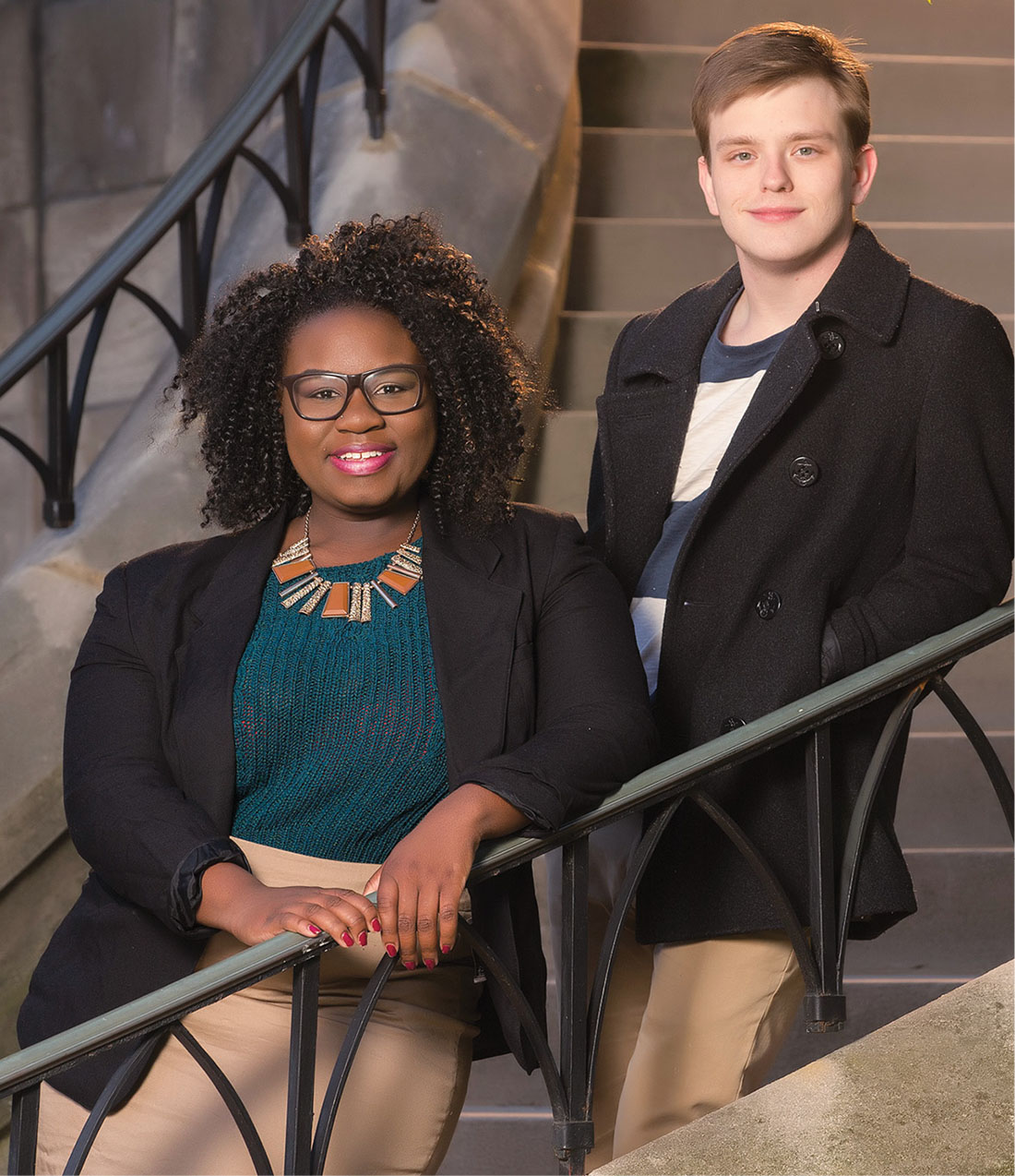
When you’re young and poor, growing up in a place like rural Arkansas, if somebody holds out the prospect of an education and a better life, you grab it.
It’s been more than 50 years since Billy Hudson got his chance, but he’s never forgotten. And now, he’s opening a world of opportunities to students like Cody Stothers and Domonique Bragg. The two 2014 graduates, who both hail from rural Arkansas, were the first Vanderbilt students to participate in the university’s Aspirnaut educational outreach program.
They’re also now the first students from that program to graduate—fulfilling a dream that began nearly a decade ago with Billy Hudson, the Elliott V. Newman Professor of Medicine; professor of biochemistry, pathology, microbiology and immunology; and director of Vanderbilt’s Center for Matrix Biology.
The Aspirnaut program provides educational opportunities in science, technology, engineering and math (STEM) to rural communities and was inspired by Hudson’s own journey from rural poverty to a career in scientific research. Since 2006 he and his wife, Dr. Julie K. Hudson—co-founder of the Aspirnaut program and assistant vice chancellor for health affairs at Vanderbilt University Medical Center—have introduced hundreds of students to STEM career paths to which they wouldn’t have been exposed otherwise.
Cody Stothers is from Sheridan, Ark., “population 4,500 on a good day,” he says. Accepted through early admission to Vanderbilt University School of Medicine, he has received a full scholarship to Vanderbilt’s joint M.D./Ph.D. program beginning this fall.
“I just never want to be a real adult,” he says jokingly. “The program is seven years long. That’s seven more years that I get to avoid words like ‘mortgage.’”
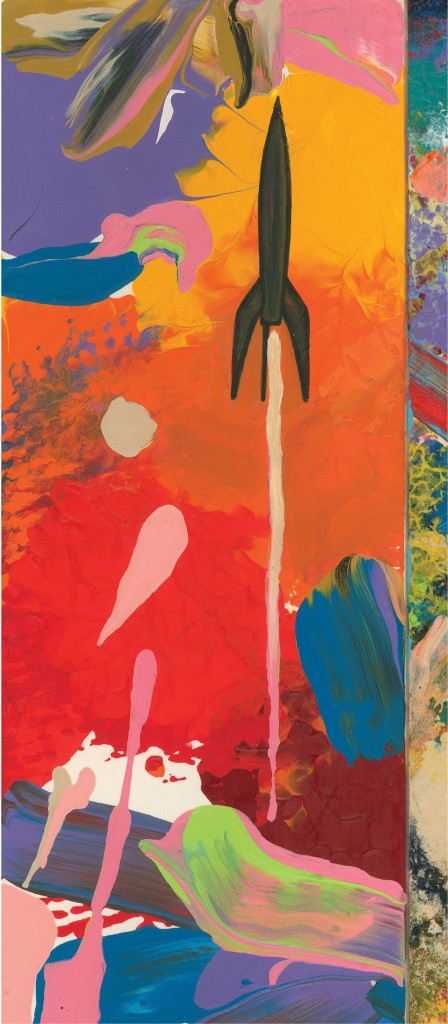
Given the path he’s traveled, it’s hard to blame him for wanting to relish his college experience a little while longer. Stothers was born in the prison where his mother was incarcerated and was raised by his grandmother, who gets by on about $9,500 a year from her government disability pension.
“My grandmother got a call from prison when I was born, saying they were going to put me into foster care if she couldn’t take me,” Stothers says. “She said yes, which was obviously awesome for me, but a burden for her. She worked her whole life, and her jobs weren’t well-paying and didn’t have a lot of benefits. She didn’t have an easy life, and taking over the responsibility of a child was hard, but she chose to and I’m thankful. She made me realize I could do anything if I tried hard enough.”
Early on, Stothers became involved in the Aspirnaut program as a school-bus rider in high school. Initially a three-year pilot project, the Aspirnaut program equipped school buses with broadband Internet access via cellphone towers, laptops and flat-screen TVs—a mobile one-room schoolhouse—so students could complete online STEM courses or watch STEM-related content designed around their school’s curriculum while riding on long bus routes.
Stothers then participated in the Aspirnaut Summer Research Internship program on Vanderbilt’s campus, which provides high-school students with laboratory experience in biomedical research at VUMC, and found it to be an eye-opening experience. “It was so challenging and thought-provoking,” he says. “By the end of the summer, I was amazed by how much we’d learned.”
Paying for college on his own was not an option. “My plan was always to work hard and try to get a scholarship,” he says. And he did—a full ride to Vanderbilt, made possible by an Arnold Family Scholarship.
Stothers, with a double major in molecular biology and philosophy, continued working in Billy Hudson’s lab after he enrolled at Vanderbilt. He served as a resident adviser for the program’s summer interns, and now he is the first Aspirnaut student accepted into medical school.
Domonique Bragg participated in the Aspirnaut Summer Research Internship after her junior year of high school. The opportunity gave her hands-on experience in a Vanderbilt lab and convinced her to apply to the university.
“In high school we learned about theories but never had any labs,” she says. “Coming here made it so much more tangible. You could touch and see things. I was fascinated by that.”
As influential as the Aspirnaut program has been academically for Stothers and Bragg, it has elevated their personal lives perhaps just as much. Like Stothers, Bragg has faced hardships, including the loss of her father during her third year of college. But neither student had to look far for a supportive network of mentors and friends.
“The Hudsons really get to know the students. It’s personal to them,” says Bragg. “I knew if I attended Vanderbilt, there would be someone here looking out for me.”
Bragg, who has a multidisciplinary major in public policy, intends to go into teaching near her hometown of West Helena, Ark., after leaving Vanderbilt this summer.
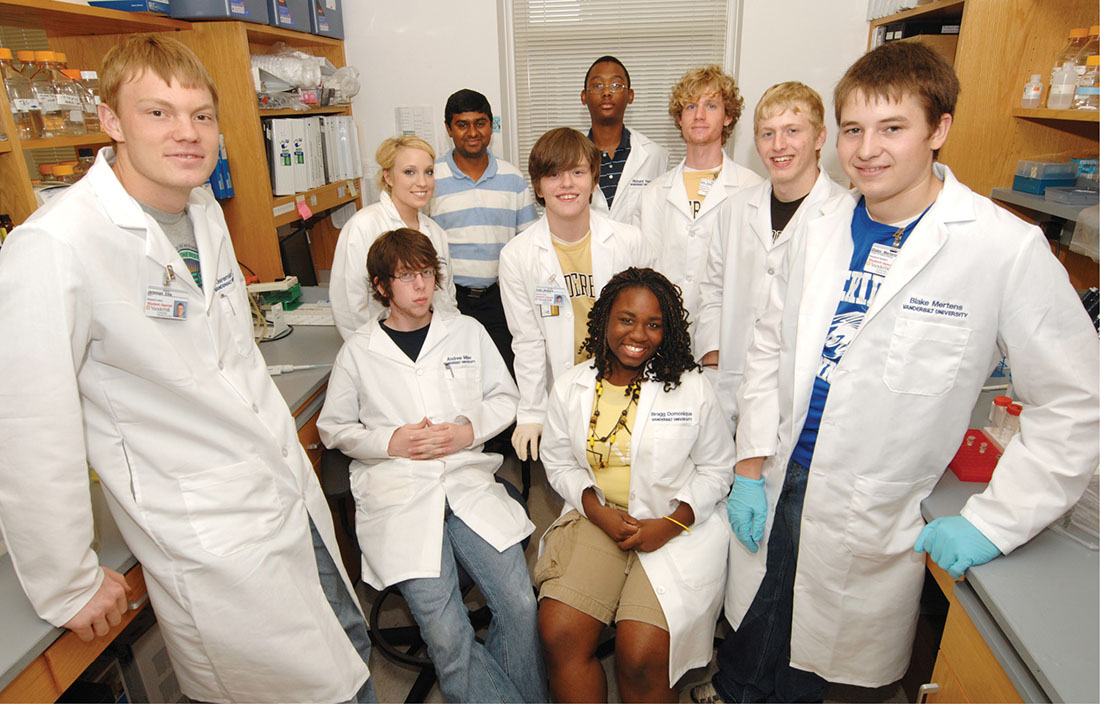
AN UNTAPPED POOL
Beyond the ways in which Aspirnaut can help transform students’ lives, the program is also addressing critical societal needs. According to the World Economics Forum, the United States is ranked 48th out of 133 developed and developing nations in the quality of its mathematics and science education. There’s also a shortage of workers in STEM careers—and rural students are a largely untapped pool of talent that can be brought into the STEM workplace, the Hudsons believe. Twenty percent of K–12 students live in rural areas.
With funding through a combination of donations, cost-sharing with partner schools, and grants, Aspirnaut brings the support of a research university and professionals to rural teachers, students and school districts, beginning in elementary school and continuing through postgraduate training. The hypothesis is that achievement in STEM increases the odds of a student’s entry into a STEM profession.
The Aspirnaut program offers many points of entry, says Julie Hudson who, in addition to her administrative role at VUMC, is an associate professor of medical education and administration and clinical anesthesiology. “A student could engage in grades K–3, grades 3–5, middle school, high school, college, graduate school and beyond or anywhere along the way. And early engagement of students with STEM is key.”
Billy Hudson, an internationally known scientist who helped discover the molecular underpinnings of autoimmune and hereditary kidney diseases, also is an entrepreneur who co-founded two biotech companies to bring to market a potential treatment he developed for diabetic kidney disease. In 2003, the year after he came to Vanderbilt to establish a new Center for Matrix Biology, he received the American Society of Nephrology’s highest honor, the Homer W. Smith Award.
Today at age 72, his sturdy frame and craggy exterior testify to the hard manual labor of his youth—chopping cotton and tending to 20,000 chickens and other livestock. Billy Hudson was raised in rural Grapevine, Ark., in a farmhouse that, for most of his childhood, lacked electricity and running water.
“We’d get up in the morning and go out to the fields,” recalls his younger sister, Ann Kincl. “When we came home at night, we worked. We didn’t have time to read, to study, so we had to rely on what intellect we had.”
Their father, Cecil Hudson, a logger with a fourth-grade education, would beat his children with a green tree branch so forcefully that their backs and legs were often raw and bloody. Cecil had been whipped as a child.
By the spring of 1958, Billy Hudson decided to escape. He planned to quit school altogether after his junior year to work on a cotton farm.
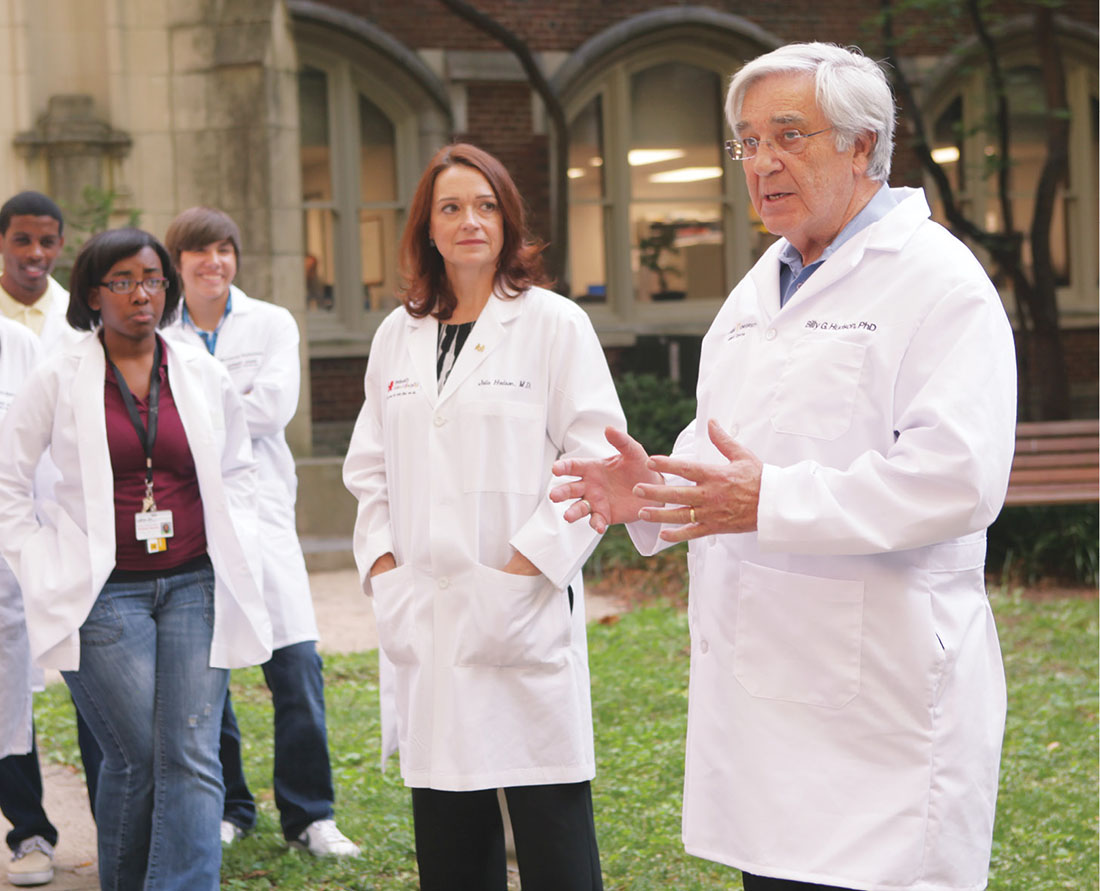
Somehow, though, history teacher and basketball coach Robert Theus got wind of Hudson’s plan. He took the boy to Henderson State Teachers College (now Henderson State University) in Arkadelphia. Although Billy had not completed high school, he was allowed to enroll.
Other teachers and mentors continued to help Hudson along the way. After earning a bachelor’s degree at Henderson State, he completed a master’s degree at the University of Tennessee and a Ph.D. in biochemistry at the University of Iowa.
Today he considers it his mission to “shine a light” by showing students there are options beyond poverty and poor living situations. In 2005 he and Julie Hudson launched their plan to help other students in his struggling community to become doctors and dentists, veterinarians, scientists and engineers.
Through the years Aspirnaut has evolved to focus on two major programmatic efforts. One is the Summer Research Internship program, which enrolls more than 35 high school, undergraduate and graduate students each summer who are paid a stipend and receive room and board to work in science research laboratories at Vanderbilt. The other effort involves weekly live and interactive videoconferences of hands-on, inquiry-based STEM labs, conducted by Vanderbilt undergraduate and graduate students, postdoctoral researchers and faculty for elementary and middle-school students in rural Arkansas, Maine, Montana and Tennessee.
This year marks the research internship program’s sixth summer. In addition to Vanderbilt, Aspirnaut has affiliations with Berea College in Kentucky, Tennessee State University in Nashville, and the United South and Eastern Tribes Inc., headquartered in Nashville. The program is a 40-hour-a-week “immersion experience” for the students, who arrive after Memorial Day and live on campus for up to 10 weeks.
“It’s not just about the ‘how-to’s’ but also the ‘whys’ or ‘big questions’ being tackled in the lab,” says Julie Hudson. “The students join a scientific team. The intent is that the students rapidly gain enough skills to become contributing members of the team and accelerate the ongoing progress of science in that particular lab. They also learn a considerable amount of basic science along the way. The students are challenged to think critically and creatively.”
In addition to lab work, all students have individual career-planning sessions, weekly roundtable luncheons, and late-afternoon discussions with key campus faculty members. High-school interns participate in ACT preparation sessions, meet with Vanderbilt financial-aid and admissions counselors about the college application process, and experience living in a college residence hall firsthand.
“While we would love to recruit all the research interns to Vanderbilt,” says Julie Hudson, “we work hard to demystify the college application and funding process in general.”
Many summer research interns return to their communities to help teachers facilitate Aspirnaut videoconferencing sessions during the school year. The number of videoconferencing sites has tripled from five in 2010–11 to 15 this year.
Videoconferencing sessions are tailored to each teacher’s curriculum and follow the STEM framework established by each state. “The classroom teacher is a pivotal partner and directs which labs are included in the schedule,” says Julie Hudson. “They’re truly partners about what they wish to see happen.”
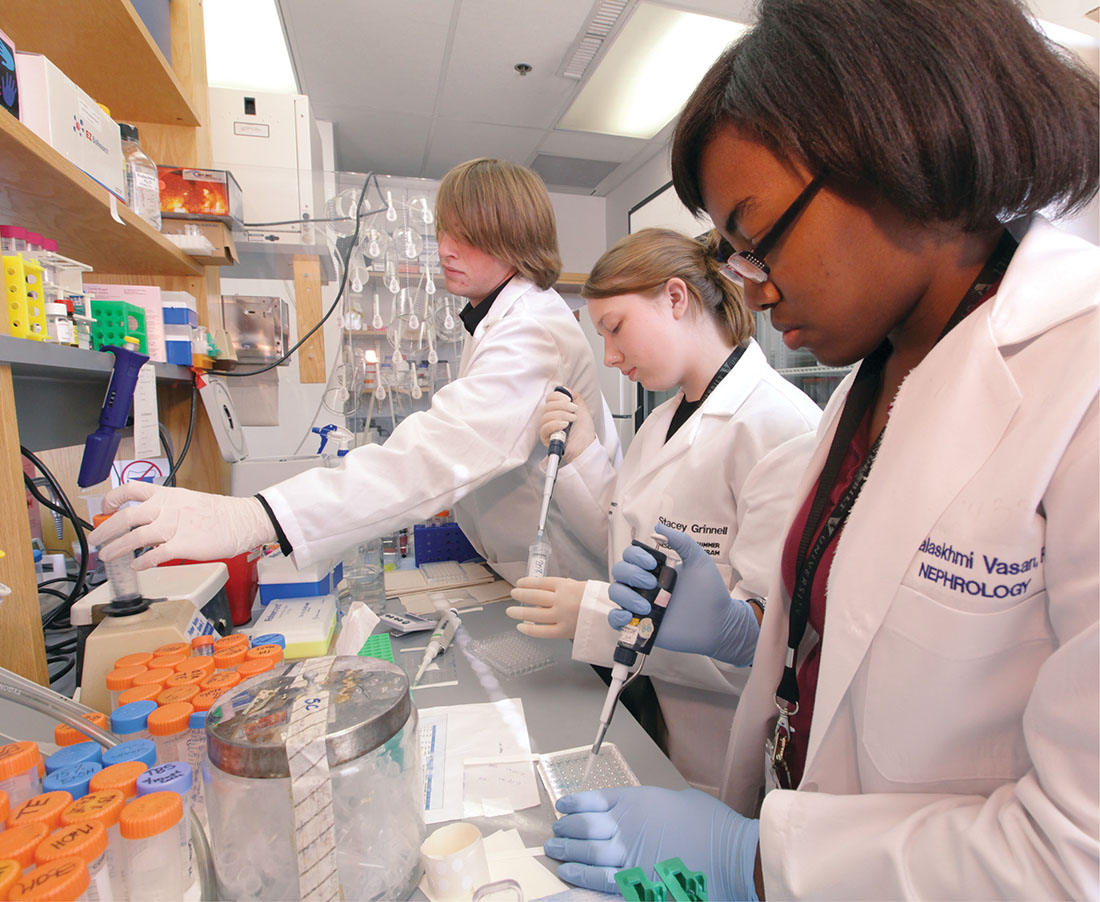
KIDNEYS AT A FIFTH-GRADE LEVEL
On a bleak February day, 15 third- to fifth-grade students from rural Hancock, Maine, listen intently as Billy Hudson stands in a Vanderbilt lab talking to Aspirnaut students about the kidneys and the toll that diabetes takes on them.
Hudson tells them how much blood flows through the kidneys each day—each kidney about the size of a standard computer mouse. He asks the students if they know someone with diabetes and talks about how the kidney filtration system is affected in a person with the disease.
“You know those orange barrels on the highway?” the white-haired professor asks the students. “They hold about 50 gallons each. About 10 of those barrels of blood flow through your kidneys every day.” He pauses for effect. Nobody says a word.
Then Hudson introduces his lecture companion, Dr. Roy Zent, a Vanderbilt nephrologist, and asks the students if they know what a doctor who specializes in kidney disease is called.
“A kidneyologist?” asks a student in the Vanderbilt lab. Hudson and Zent, both wearing white coats, laugh—and so do the Maine students, who are seated at their classroom desks watching the exchange on a TV monitor.
Videoconferencing sessions are organized as themed sets spanning several weeks. The units start with very fundamental concepts and foundational knowledge.
“We then build on that framework toward higher concepts and real-life applications of that science—all in the context of hands-on activities,” says Julie Hudson. “In a few weeks’ time, we’ve connected the dots from fundamental knowledge to solving real-world problems.”
Most elementary and middle-school teachers, she explains, have a degree in education—not necessarily in science, math, engineering or technology. “Classroom teachers have my highest admiration. They have many points of accountability and, often, with minimal resources. With regard to STEM curriculum, we who work in major research universities are challenged to keep up with the rapidly evolving generation of new knowledge. How could a classroom teacher realistically be expected to do the same?
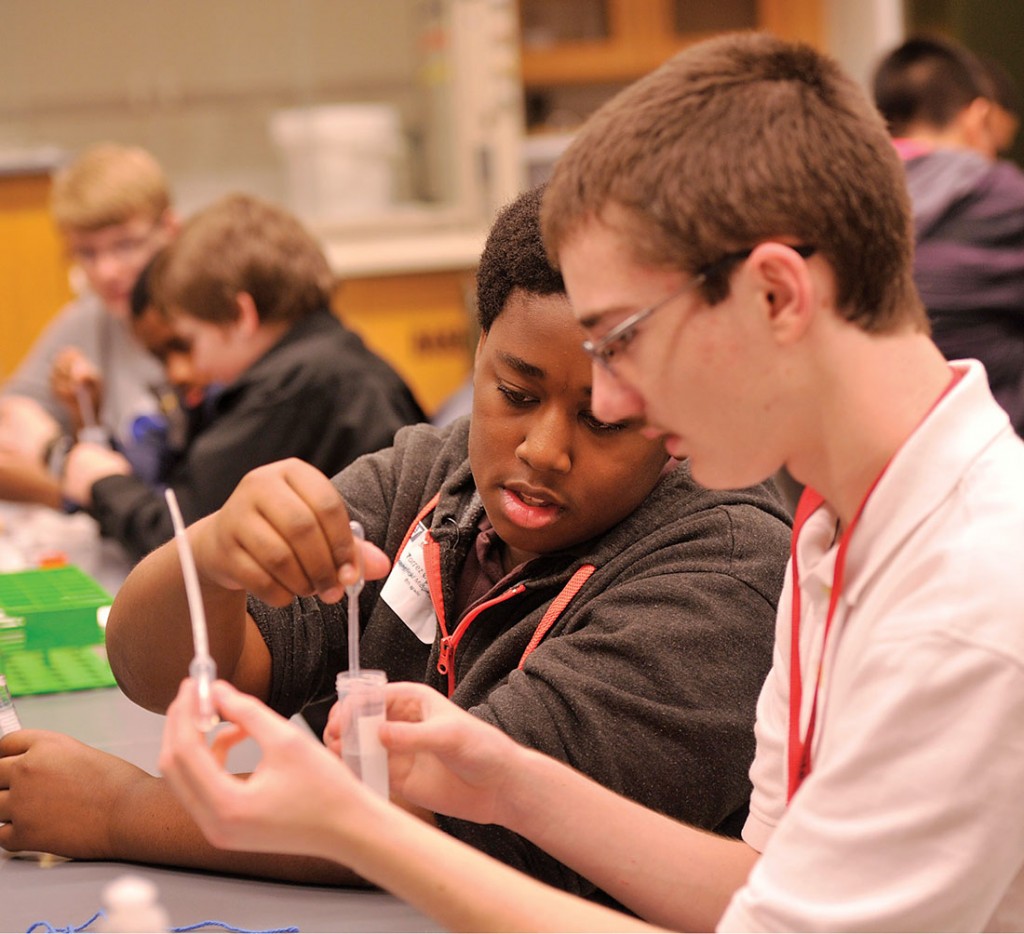
“The practical solution,” she adds, “is not to re-train teachers but to partner the content and experiential expertise of university STEM professionals with the classroom expertise of the teacher. The weekly videoconferences achieve this partnership. Moreover, the STEM students and professionals not only are experts in the scientific material they are teaching but also communicate firsthand about educational pathways, career opportunities, and the rewards and excitement of discovery.”
Professional development for teachers is a secondary benefit, she says. “The program, almost vicariously, administers onsite professional development every day we’re in the classroom.”
PLANTING A SEED
There’s already more demand for videoconferencing than the program can provide. Billy and Julie Hudson hope Aspirnaut will serve as a model for other research universities to start similar endeavors and that the videoconferencing model will become a template.
“Our colleagues here and at other universities don’t have time to develop programs from the ground up,” Julie Hudson says. “We have spent eight years developing a model that could be replicated.”
When one fully realizes the extent of the need, she acknowledges, it’s easy to get overwhelmed. “We won’t solve all problems,” she says, “but we could potentially impact many more students if the model is replicated.”
And that’s what it’s all about, says Billy Hudson: planting a seed of hope and anticipating the student will take it from there. “Brainpower is distributed randomly,” he says. “It doesn’t go by who you are and how much money you have, or the color of your skin or your religion. A lot of kids out there are isolated in rural America, and they’re special people who can contribute to society.
“If kids know that others like me have overcome these circumstances, and they can identify with any part of it, it might give them hope. I know what it’s like not to have hope.”
This article incorporates stories written about the Aspirnaut program by Nancy Humphrey, Seth Robertson and Bill Snyder, all of whom work for Vanderbilt University News and Communications.
Watch a video about Cody Stothers, Domonique Bragg and the Aspirnaut program: